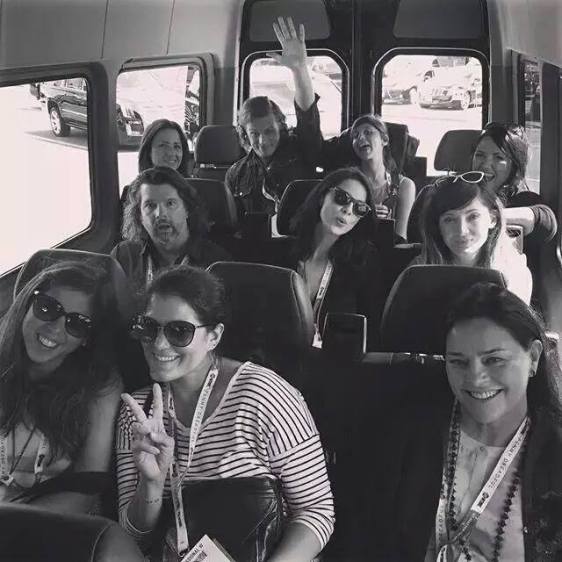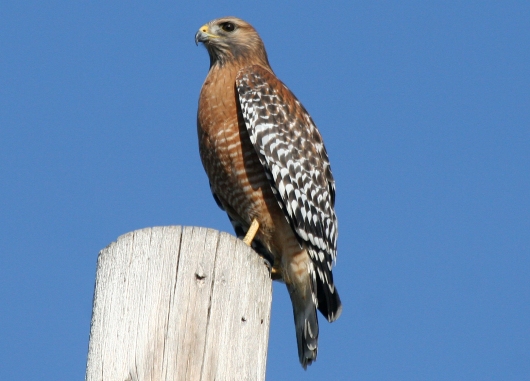Barring some spotty transmission of sound, tonight’s Skype session with Outlander author Diana Gabaldon was a treat–and free! Connecting from her Santa Fe, NM, getaway house (lives in Scottsdale, AZ) to our own Lake High School Performing Arts Hall in Uniontown, Ohio, the Goddess of Jamie and Claire Fraser chatted to upwards of 200 people.
To start the presentation, Diana skipped the most common questions avid fans know the answers to, such as how she started writing the first book. Instead, she shared highlights about book 9’s progress (Go Tell the Bees That I Am Gone–finish date still unknown), her writing, research, and editing processes, her three main types of characters (“mushrooms, onions, and hard nuts”–see Part 2 of her reference book The Outlandish Companion for full details), and impressions from consulting on the STARZ TV show adaptation.
In her explanation of character types, she used the case of Mr. Willoughby in Voyager to illustrate how a character springs up like a mushroom. Jamie and Claire are onion characters, with layers that keep revealing more depth. Then, some characters she is “stuck with,” hard nuts such as history’s George Washington, as she writes her current book during the American Revolutionary War, and Brianna Randall, Claire and Jamie’s daughter who had to be born for the long-haul story to work.
Diana has to get to know such characters gradually as they reveal themselves to her. She also noted that she doesn’t “kill” characters; they just die and she, too, finds those events “distressing.” She depicts her role as more of a conduit or vessel through which her stories create themselves. While it is not a passive, or by any means easy, process, she works intuitively and must remain receptive. She uses the senses to pose questions that her imagination then helps her answer.
True to her science background, (former) Professor Gabaldon described her writing in terms of natural processes. She revealed how her scenes start from “kernels” (a vivid image, a line of dialogue, a certain ambiance, a physical object) and proceed by an organic process that she compared to both “growing crystals in the basement” and “a slow game of Tetris.” She “fiddles” until the pieces fit together just right.
Perhaps unusual for a novelist, Diana doesn’t write in a straight line or plan her books in advance; she works wherever the images come from and cobbles or, as some have said, “quilts” scenes together. From the beginning of her book making, she has combined the research and writing processes, toggling back and forth to learn more and make corrections as needed. Her research prowess has become legendary among fans. She also shared how each book ultimately forms a geometric shape. Dragonfly in Amber is like a barbell, anchored by a framing story on both ends, and Outlander has a series of three pyramids or triangles where tensions rise and fall.

Diana Gabaldon, San Diego Comicon 2015. Original photo source unknown.
During the Q&A, I was blessed enough to be able to ask Diana a direct question about how the show is adapting the Jamie-Claire relationship. I talked to HERSELF face to face sort of! Whoa. Happy Birthday (week) to me indeed. She agreed with my view that the core bond of these central characters needs some attention and further development on screen, and she indicated the producers think so, too. Diana assured us that the first six episodes she has seen of season 3 are “great,” which brought cheers from several attendees including me.
Just turned 65 last week, Diana Gabaldon is an endearing blend of erudite, friendly, and oddball. This was my second experience of a live Diana Gabaldon video session. She’s very generous and engaged with her fans, a wonderful writer and natural speaker.
Our hosts ran a solid event, the lights and audience mics worked well, and, though we were dram-dry, there was ample, delicious homemade Scottish shortbread laid out near the exit. Mmm . . . buttery, flaky goodness.
In sum, read these awesome Outlander books, people. And if you can, catch a video chat session with Herself. (Preaching to the choir?) The STARZ show really is pretty great, and season 3’s coming up. Even more impressive, though, the books are an endless fount of riches with an essence that even the very talented team of show producers and writers is hard pressed to capture in a visual medium. Books and TV are distinctly different species of animal, but in the case of this timeless, time-driven story, each is fierce and beautiful in its own way, with something for just about everyone.
Sláinte mhath from this balmy winter’s night in northeast Ohio’s Outlander fan land.
The event was hosted by the Stark County District Library, sponsored by Lake Community Friends of the Library, and buoyed by Diana’s two signed book copies for two lucky trivia game winners (not me which was a-okay).
Enjoy this? You might like my Outlander books and STARZ TV series reviews.
Books
- Book Review: Outlander by Diana Gabaldon
- 3 Quick Book Reviews: Outlander, Dragonfly in Amber, and Voyager
TV Show
Season 1
- Response to Outlander Post, “Episode 115: ‘Wentworth Prison’ (SPOILERS)”
- Review: Outlander Season 1’s Ironic Chilling Effect
- Golden Globes for Outlander STARZ!
Season 2
- Five-Phrase Friday (36): Comic Relief in Outlander STARZ Ep201
- Five-Phrase Friday (37): No “Callow” Craft
- Outlander STARZ: Season 2 Review, Eps 201 and 202
- Review: Sandringham in Outlander STARZ – Beyond Adaptation
- Outlander STARZ: “Faith” and Patience
- The Labor of Learning to Set Limits
Book 3 and Season 2, Looking Ahead to Season 3
Season 3

